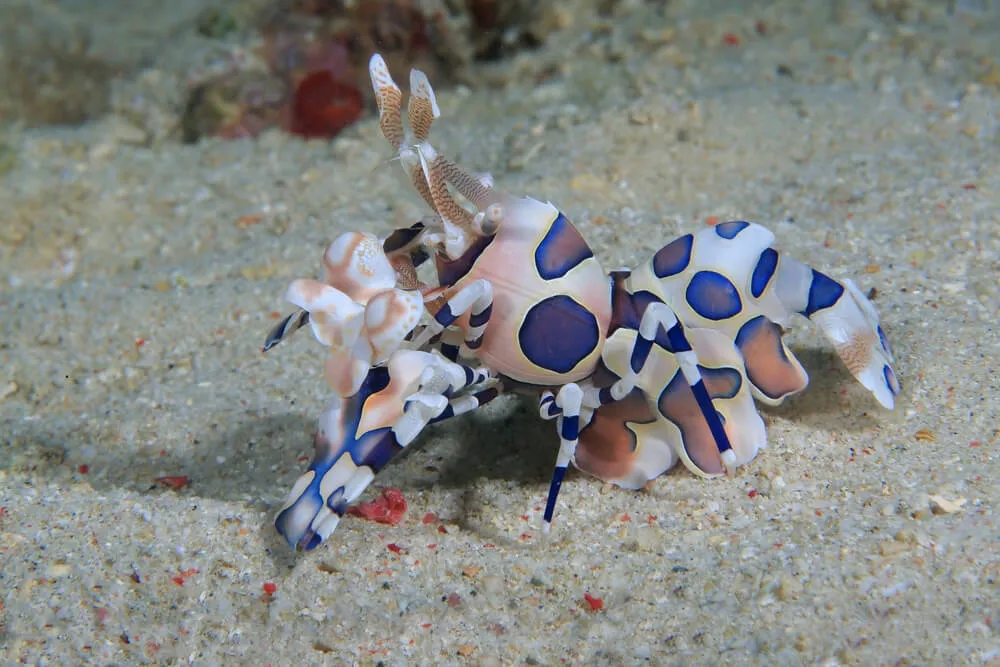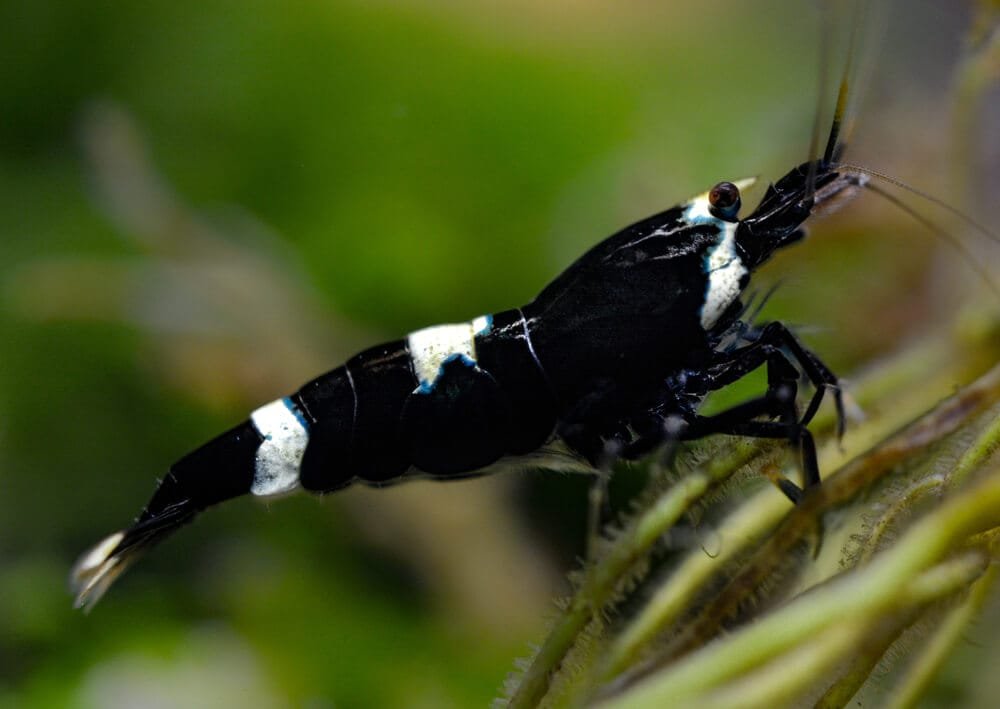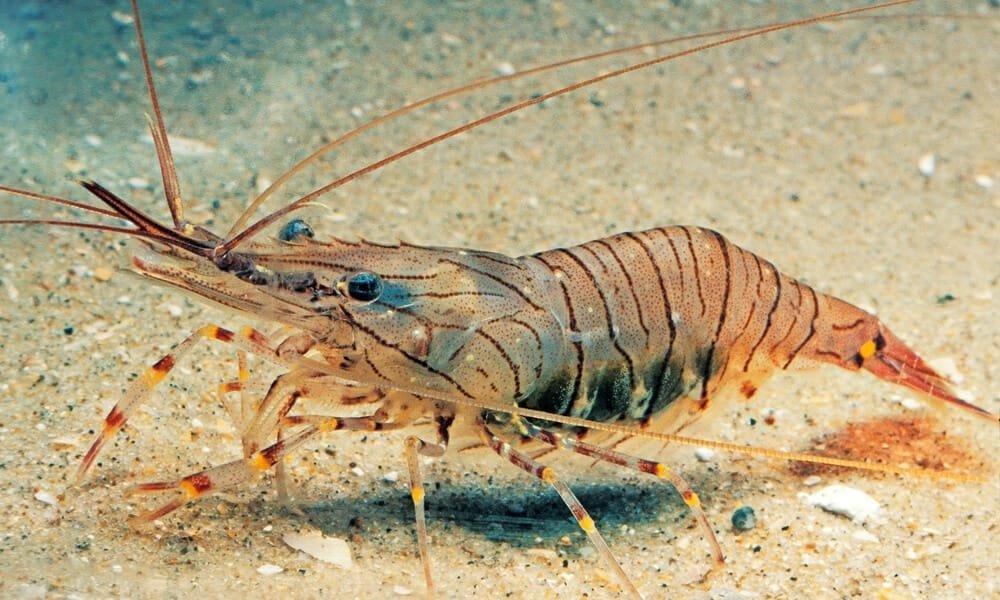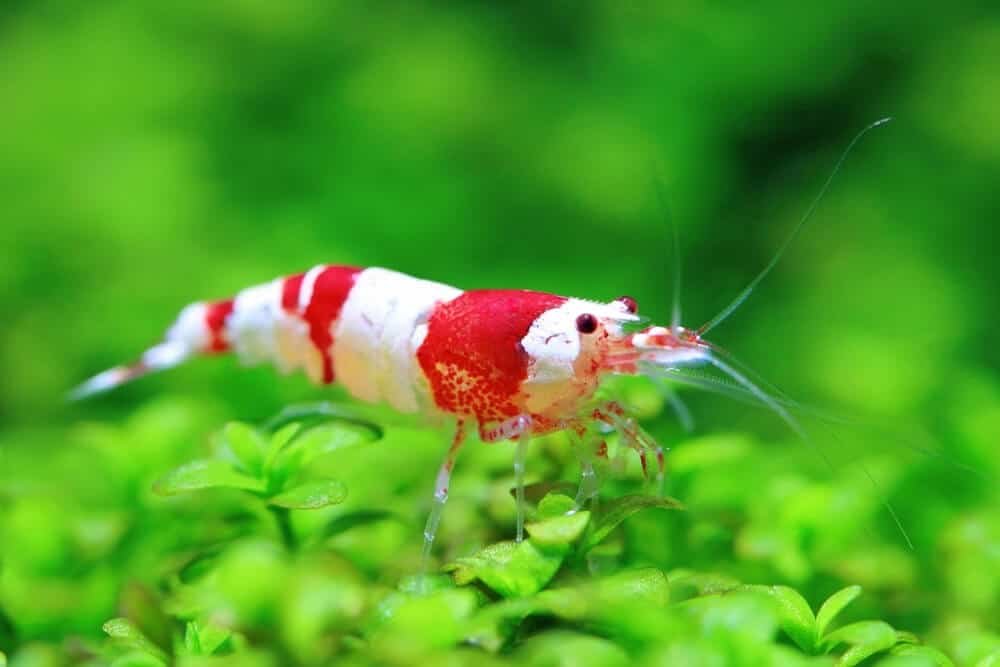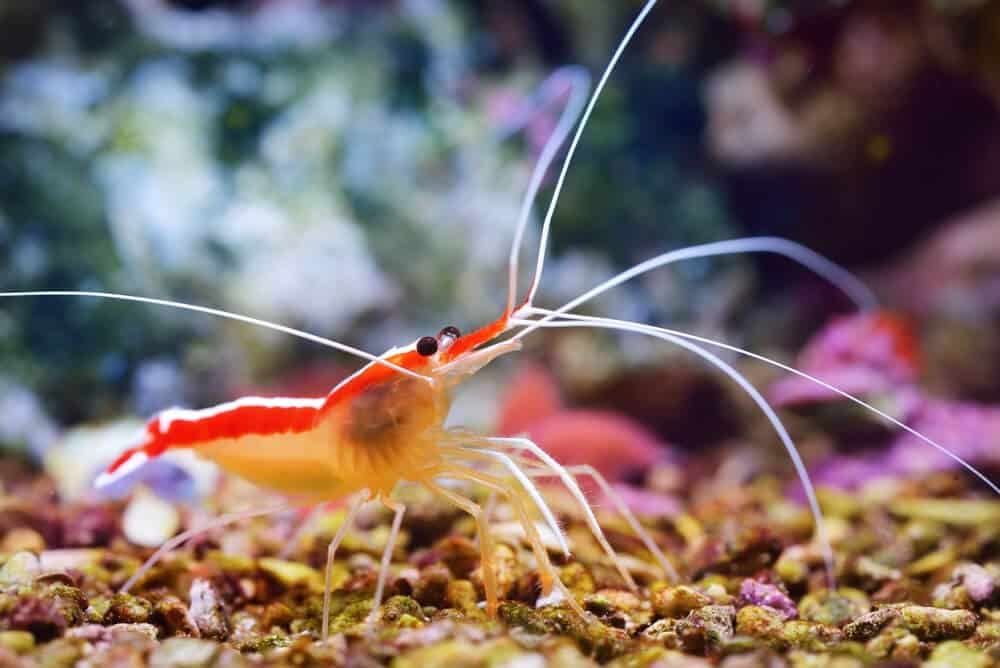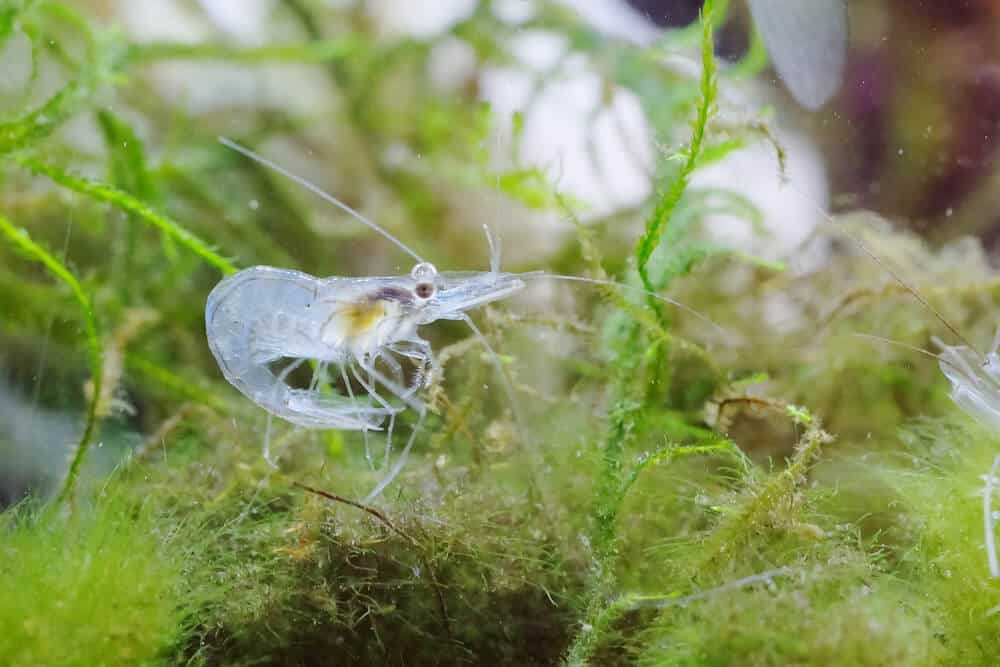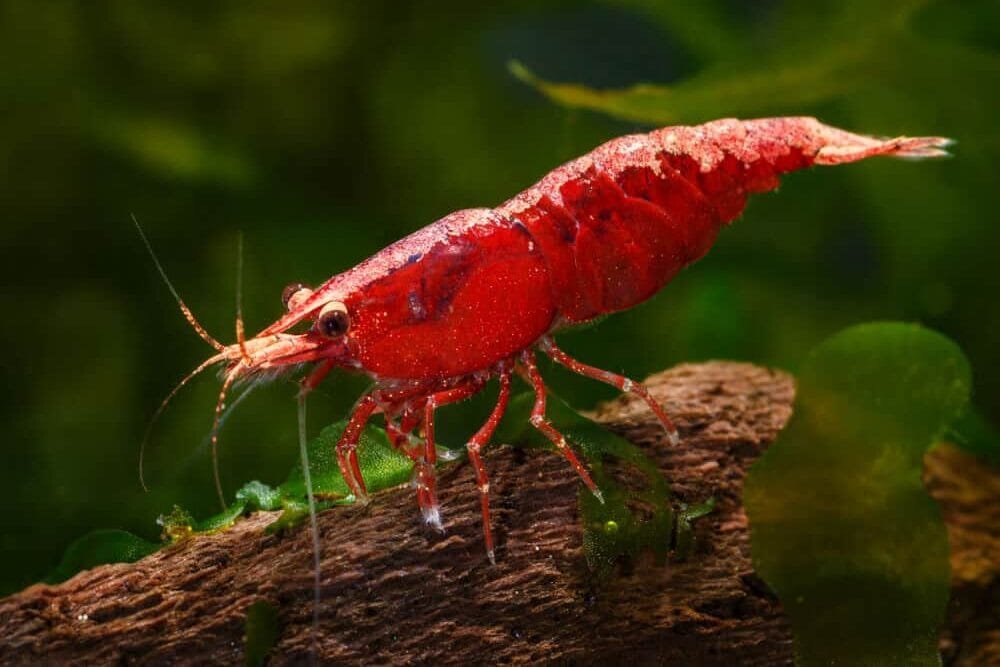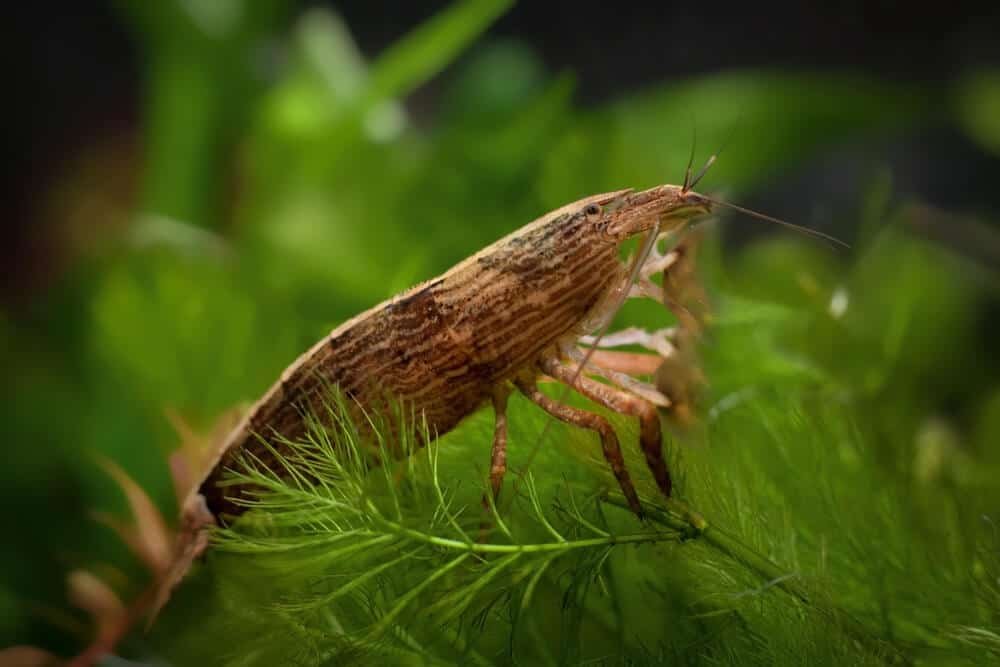Red Rili Shrimp: A Complete Care Guide And Breeding Tips
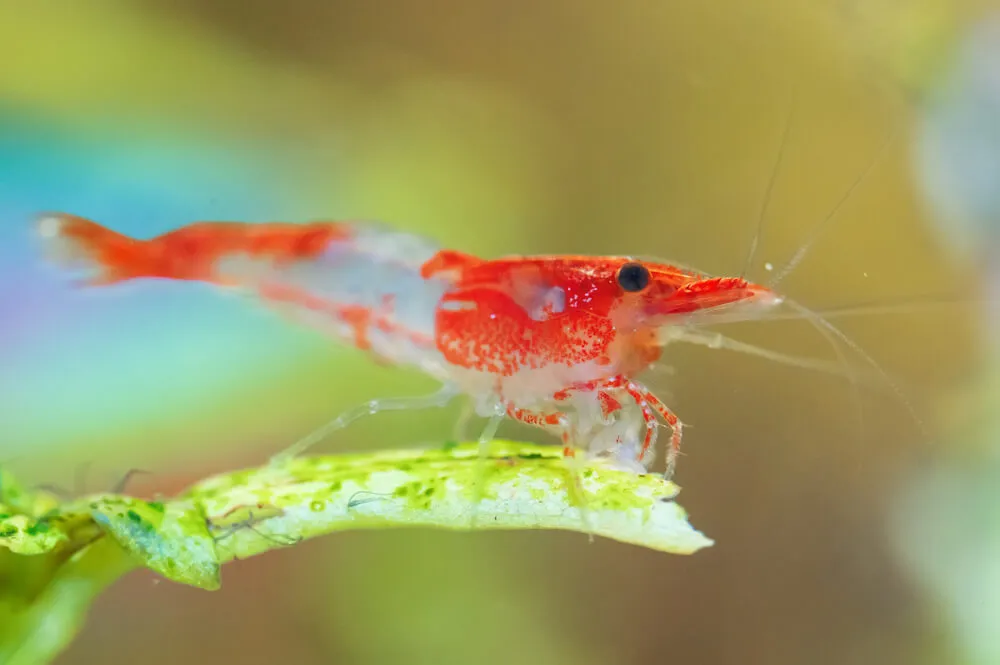
Imagine a tiny creature that can bring vibrant colors and life to your aquarium – that’s the Red Rili Shrimp for you! With its eye-catching bright red coloration and stunning white markings, this little critter is sure to be the center of attention. Red Rili Shrimp, also known as Neocaridina davidi var. Rili, are not only visually stunning but also relatively easy to care for, making them a popular choice among aquarists of all levels.
In this article, we will explore the fascinating world of Red Rili Shrimp and uncover the secrets to keeping them happy and healthy in your aquarium. So, get ready to dive into the world of these captivating shrimp and discover how they can add a touch of beauty to your aquatic sanctuary.
Physical Description
Red Rili Shrimp, scientifically known as Neocaridina davidi var. “Rili,” are a striking and popular addition to freshwater aquariums. As their name suggests, they possess a vibrant red coloration, which contrasts beautifully against their transparent bodies. One of the most characteristic features of Red Rili Shrimp is their unique pattern, with red coloration concentrated on their head, tail, and abdominal segment, while their midsection remains translucent.
These tiny shrimp boast an average adult length of about 1 to 1.5 inches (2.5 to 3.8 cm), making them perfect for nano and small aquarium setups. Their small size makes them a delight to watch scuttle around the tank, adding a lively and colorful touch to any aquatic environment.
Water Parameters
When it comes to Red Rili Shrimp, maintaining proper water parameters is crucial for their well-being. These shrimp thrive in a freshwater environment, and it is essential to provide them with stable and clean water conditions. Here are the recommended water parameters for Red Rili Shrimp:
- Temperature: Ideally, the water temperature should range between 72°F and 78°F (22°C to 26°C).
- pH Level: The recommended pH range for Red Rili Shrimp is slightly acidic to neutral, around 6.5 to 7.5.
- Water Hardness: Red Rili Shrimp prefer a moderate water hardness of 6 to 10 dKH (108 to 179 ppm).
Monitoring and maintaining these water parameters will help ensure the health and happiness of your Red Rili Shrimp, allowing them to thrive in their aquatic home.
Tank Setup
Creating a suitable tank setup is vital to provide Red Rili Shrimp with an environment that resembles their natural habitat and encourages their well-being. Here are some essential aspects to consider when setting up a tank for your Red Rili Shrimp:
Tank Size
A small aquarium with a minimum capacity of 5 gallons (19 liters) is suitable for a small group of Red Rili Shrimp. However, for optimal comfort and enjoyment, a larger tank with a capacity of 10 gallons (38 liters) or more is recommended.
Substrate
Choose a fine-grained substrate like sand or gravel to create a natural-looking setting for your shrimp. Avoid using sharp or coarse substrate that could potentially harm their delicate bodies.
Plants and Decorations
Provide ample hiding spots and plant cover using live or artificial plants, driftwood, and rocks. These features not only mimic the natural habitat of Red Rili Shrimp but also offer them places to explore, graze, and take shelter.
Filtration and Aeration
Install a gentle filtration system, like a sponge filter, to maintain water quality without creating strong currents that can hinder Red Rili Shrimp’s movement. Aeration through an air pump is also beneficial as it boosts oxygen levels, ensuring a healthy environment for your shrimp.
Feeding
Feeding Red Rili Shrimp is a straightforward process, as these delightful creatures are omnivores with a hearty appetite. They will readily consume a variety of food sources, including:
- Prepared Food: High-quality shrimp pellets, flakes, or granules specifically formulated for shrimp can form the staple diet of your Red Rili Shrimp. These commercially available foods are enriched with essential nutrients and minerals, promoting their overall health.
- Vegetables: Supplement their diet with blanched leafy greens, such as spinach, kale, or lettuce. These vegetable treats provide necessary fiber and additional nutrients.
- Protein: Offer your Red Rili Shrimp occasional protein-rich treats like small amounts of thawed, peeled, and crushed peas, brine shrimp, or bloodworms. These protein sources provide variety and ensure well-rounded nutrition.
Feed your shrimp small amounts of food once or twice a day, ensuring they consume it within a few minutes. Overfeeding can lead to water quality issues, so it’s essential to strike a balance between offering enough food for their needs without creating excess waste.
Breeding
Red Rili Shrimp are prolific breeders, making them an ideal choice for those interested in observing their shrimp colony grow. Breeding Red Rili Shrimp can be a rewarding experience, as long as you provide the right conditions and pay attention to a few essential factors:
Gender Identification
Red Rili Shrimp exhibit sexual dimorphism, with females typically being larger and displaying a more vibrant red coloration than males. Females also have a saddle-shaped marking on their backs, which indicates their reproductive readiness.
Reproductive Strategy
Red Rili Shrimp are relatively easy to breed, as they are adept at reproducing in freshwater aquariums. Females carry fertilized eggs under their tails until they hatch into miniature shrimp. Providing suitable hiding spots, planting areas, and other habitat enhancements will encourage successful breeding.
Optimal Breeding Conditions
Maintain stable water parameters within the recommended ranges mentioned earlier, ensuring good water quality. Adequate nutrition and varied diet play a crucial role in supporting the breeding process.
Compatibility
Red Rili Shrimp are known to be peaceful and non-aggressive towards other tank inhabitants. When considering tankmates for your Red Rili Shrimp, choose species that can coexist harmoniously in a community setup. Here are some compatible tankmates for Red Rili Shrimp:
Small Fish
Peaceful and non-predatory fish species like dwarf rasboras, celestial pearl danios, and endlers can be suitable tankmates. Avoid larger or aggressive fish that may pose a threat to your shrimp.
Snails
Adding small snail species, such as nerite or Malaysian trumpet snails, can be beneficial for your tank. They help maintain the tank’s cleanliness by consuming algae and decaying matter.
Other Shrimp
Red Rili Shrimp can coexist peacefully with other dwarf shrimp species, like Cherry Shrimp or Blue Velvet Shrimp, as long as they share similar water parameters.
Common Health Issues
While Red Rili Shrimp are generally hardy and resistant to many diseases, providing optimal care can prevent common health issues. Some potential health concerns to be aware of include:
Poor Water Quality
Inconsistent or poor water quality can lead to stress, weakened immune systems, and bacterial infections in Red Rili Shrimp. Regular water testing and maintenance, along with proper filtration, can help prevent these issues.
Molting Issues
Shrimp periodically shed their old exoskeletons to grow. Molting problems can occur if the water parameters are unfavorable or if the shrimp lack essential minerals for the molting process. Providing a calcium-rich diet and stable water conditions can mitigate these risks.
Parasites and Diseases
While relatively less susceptible to diseases, Red Rili Shrimp can still be affected by common freshwater parasites like planaria and hydra. Regular observation, quarantine procedures, and appropriate treatment can help address these issues.
Maintaining proper tank hygiene, adhering to appropriate feeding practices, and regularly monitoring water parameters can go a long way in preventing these health issues and promoting the overall well-being of your Red Rili Shrimp.
Frequently Asked Questions
1. Can Red Rili Shrimp be kept in a fish bowl without a filter?
While it is possible to keep Red Rili Shrimp in a fish bowl, it is not recommended. A fish bowl without a filter can lead to poor water conditions and compromised shrimp health.
2. How many Red Rili Shrimp can I keep in a 10-gallon tank?
A 10-gallon tank can comfortably house a colony of 20 to 30 Red Rili Shrimp. However, ensure the tank is appropriately cycled and maintained to support the increased bio-load.
3. Can Red Rili Shrimp live with bettas?
It is generally not recommended to keep Red Rili Shrimp with bettas, as bettas can be aggressive and may see the shrimp as prey or competitors. However, each betta has a unique temperament, and some individuals may be more compatible than others.
4. Can Red Rili Shrimp survive in tap water?
Red Rili Shrimp can adapt to tap water if it is dechlorinated and the pH and other water parameters are within their preferred ranges. It is essential to use a water conditioner to remove harmful chlorine and chloramines before introducing tap water to your tank.
Tips for Keeping Red Rili Shrimp
- Regularly monitor and maintain stable water parameters to provide optimal conditions for your Red Rili Shrimp.
- Ensure a balanced diet for your shrimp, providing both prepared foods and fresh vegetables.
- Avoid sudden temperature or water parameter fluctuations, as they can stress and harm your shrimp.
- Provide hiding spots and dense plant cover in your tank to create a comfortable and safe environment for your Red Rili Shrimp.
- Do not overpopulate your tank, as overcrowding can lead to stress and negative health effects on your shrimp.
Conclusion
Red Rili Shrimp are captivating in both appearance and behavior, making them a delightful addition to any freshwater aquarium. Their vibrant red coloration and unique pattern bring a splash of color and life to your tank. By providing proper care, maintaining suitable water parameters, and following best practices for feeding and breeding, you can create an ideal habitat for Red Rili Shrimp to flourish. With their peaceful nature and compatibility with certain tankmates, they can bring joy and beauty to both beginner and experienced shrimp keepers. So why not consider adding these charming Red Rili Shrimp to your aquatic family?
